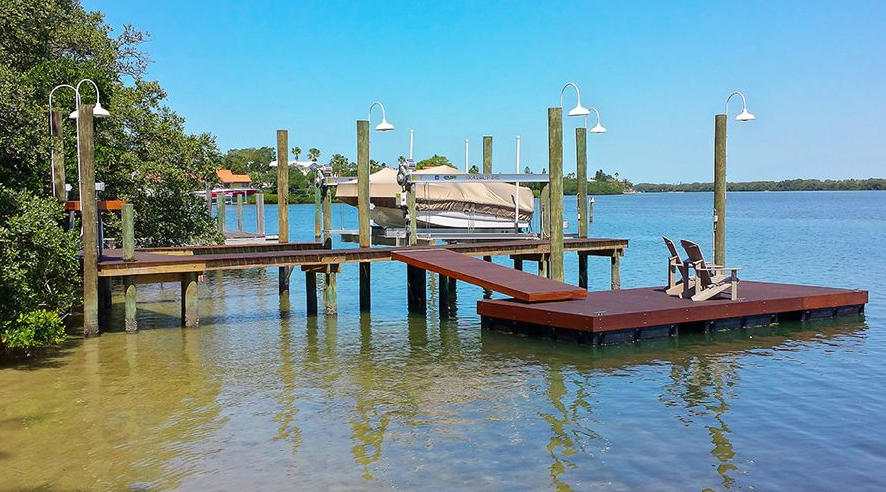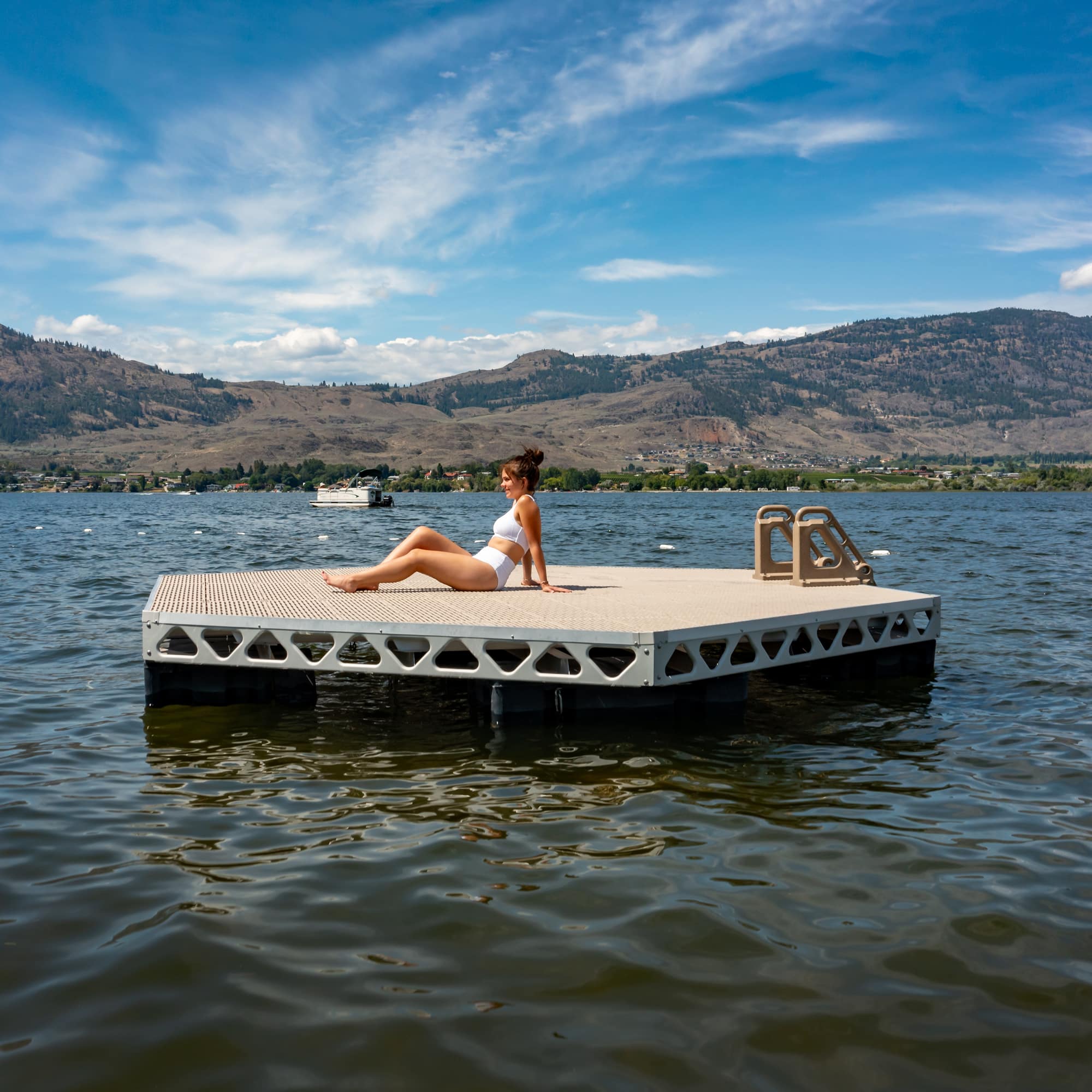Crafting Customized Solutions: Why a Floating Dock Builder is Necessary for Special Requirements
Crafting Customized Solutions: Why a Floating Dock Builder is Necessary for Special Requirements
Blog Article
Produce the Perfect Docking Remedy With Floating Docks
Floating docks existing a flexible remedy for a range of maritime demands, adjusting seamlessly to fluctuating water levels and varied vessel types. Their modular nature enables quick setup and moving, yet the choice of ideal products and design features is vital for making certain both capability and aesthetic appeal. As we explore the crucial elements that contribute to the performance of floating docks, a number of key variables regarding security and upkeep will arise, raising questions about how to maximize your docking experience. The succeeding conversation will certainly light up these important factors to consider.

Advantages of Floating Docks
Floating docks deal numerous benefits that make them a suitable selection for numerous maritime applications. Among the primary benefits is their flexibility to changing water degrees. Unlike repaired docks, floating docks surge and fall with the tide, guaranteeing regular access for vessels. This feature is specifically essential in areas prone to substantial tidal fluctuations or seasonal water level adjustments.
Furthermore, floating docks are usually less complicated and quicker to mount compared to traditional set frameworks. Their modular design enables simple assembly and disassembly, assisting in maintenance and relocation when required. This flexibility is specifically helpful for short-lived applications or in environments where problems may alter.
Floating docks also often tend to be much more environmentally pleasant, as they reduce disruption to the seabed and bordering water environments. Their buoyant nature decreases the danger of damage to marine life, advertising a much healthier environment. These docks can be personalized to accommodate different vessel dimensions, guaranteeing that they meet details operational requirements.
Inevitably, the combination of flexibility, ease of setup, and ecological considerations makes floating docks an extremely efficient remedy for a large range of maritime requirements.
Selecting the Right Products
Selecting the ideal products for floating docks is vital to guarantee long life, security, and toughness. The option of materials directly affects the dock's efficiency in different environmental conditions, consisting of direct exposure to water, sunlight, and prospective wear from aquatic web traffic.
Typical materials used for floating docks consist of light weight aluminum, timber, and high-density polyethylene (HDPE) Aluminum is light-weight, corrosion-resistant, and calls for marginal upkeep, making it an excellent selection for durability. Its preliminary expense can be higher contrasted to various other products.
Timber, while visually attractive and offering a conventional look, can be prone to rot and bug damage if not correctly treated. For that reason, using pressure-treated wood or normally resilient species like cedar or redwood can minimize these issues.
HDPE is a preferred selection because of its resistance to UV rays and chemicals, along with being eco-friendly. dock company. It is available and light-weight in various shades, allowing for modification
Inevitably, the best product selection will depend on particular requirements, including budget, desired aesthetics, and ecological considerations. Mindful evaluation of these aspects will cause a effective and resilient floating dock option.
Design Considerations for Stability
When making floating docks, ensuring security is a basic facet that can significantly impact their capability and safety. Stability in floating dock design is influenced by different factors, consisting of buoyancy, weight circulation, and the setup of components. An ideal buoyancy system need to use products that give sufficient lift while reducing weight. This balance makes sure that the dock remains above water, also under differing lots.
Weight circulation is important; equally dispersing tons throughout the dock protects against turning and improves security. Larger layouts can use boosted stability, particularly in harsh water conditions, while longer docks may call for additional assistances to stop sagging.
Another vital factor to consider is the environmental influence, consisting of wave action and wind. Integrating functions such as sidewalls or skirting can help minimize the impacts of environmental pressures, preserving security in unfavorable conditions. Inevitably, a combination of thoughtful layout, material selection, and understanding of ecological factors will certainly yield a floating dock that fulfills both security and safety needs.
Installation Tips and Strategies

Following, secure the required authorizations and abide by regional guidelines, which might dictate installation techniques and ecological considerations. Engage a qualified contractor experienced in floating dock setups if read what he said required. Use high-grade materials designed for aquatic settings to enhance resilience and durability.
When positioning the dock, straighten it identical to the coastline to promote simple gain access to. Ensure that the anchoring system is robust, using concrete blocks or helical supports to support the dock against wind and wave activity. It's crucial to make up seasonal water level changes, including potential ice motion in colder climates.
Throughout the setup, verify the dock's floatation and stability prior to finalizing the anchoring. Frequently inspect the installment for any indications of wear or damages. By following these ideas and methods, you can attain a protected, practical, and visually pleasing floating dock setup that fulfills your needs.
Upkeep and Treatment Guidelines
Caring and maintaining for floating docks is crucial to lengthening their life-span and making certain secure usage. Regular examinations should be conducted to determine any kind of indicators of wear, damage, or marine development. Try to find fractures, loosened installations, or discolored areas on the dock's surface, as these problems can endanger architectural honesty.
Cleaning is essential. Make use of a stress washing machine to remove algae, barnacles, and debris, which can accumulate in time. For stubborn go to this web-site development, take into consideration environmentally pleasant cleaner that will not damage marine life.
Furthermore, inspect the mooring lines and anchors frequently to ensure they are cost-free and safe from rust. Replace any type of torn or damaged lines promptly to maintain security.
During severe weather, such as storms or freezing conditions, take preventive steps. Secure the dock with additional mooring lines and, if viable, remove any removable parts to stop damage.
Conclusion
In final thought, the execution of floating docks presents a effective and versatile docking option suitable for different maritime applications. With correct installation and normal maintenance, floating docks can supply reputable and reliable docking experiences for a large array of vessels.
As we discover the essential aspects that add to the effectiveness of floating docks, a number of vital factors concerning stability and maintenance will arise, increasing questions about exactly how to optimize your docking experience. Unlike repaired docks, floating docks surge and fall with the trend, ensuring constant availability for vessels.When making floating docks, making sure security is a basic facet that can considerably influence their capability and safety and security. Stability in floating dock design is influenced by different aspects, consisting of buoyancy, weight circulation, and the setup of parts. Ultimately, a mix of thoughtful layout, material selection, and understanding of environmental elements will yield a floating dock that fulfills both security and security demands.
Report this page